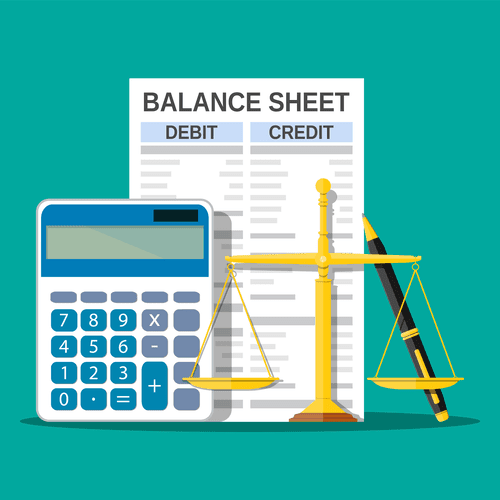Product costs and period costs definition, explanation and examples

These expenses are considered period costs and are expensed in the period they are incurred. Similarly, salaries paid to office and administrative staff don’t contribute to the production of product. Thus, these too are considered period costs and reported on the income statement as an expense. These costs are not part of the manufacturing process and are, therefore, treated as expense for the period in which they arise. Period costs are not attached to products and the company does not need to wait for the sale of its products to recognize them as expense on income statement. According to generally accepted accounting principles (GAAPs), all selling and administrative costs are treated as period costs.
- Product costs are initially attached to product inventory and do not appear on income statement as expense until the product for which they have been incurred is sold and generates revenue for the business.
- Likewise, the salary of the assembly line worker who mounts the tires on rims and bolts them onto the car would be considered a product cost because it is necessary to manufacture the end product.
- Out of the total costs, 70% were attributed to the cost of goods sold, 10% to work in progress, and 20% to finished goods inventory.
- Service companies use service overhead, and construction companies use construction overhead.
Valuation of Opening and Closing Inventories
- The direct materials, direct labor and manufacturing overhead costs incurred to manufacture these 500 units would be initially recorded as inventory (i.e., an asset).
- The costs of delivery and storage of finished goods are selling costs because they are incurred after production has been completed.
- It is important to understand through the accrual method of accounting, that expenses and income should be recognized when incurred, not necessarily when they are paid or cash received.
- (You may also see other names for manufacturing overhead, such as factory overhead, factory indirect costs, or factory burden).
- Now that we have taken a bird’s eye view of the matching principal, let’s look into the meanings of and difference between product costs and period costs.
At the end of the period, the inventory that remains unsold is the closing inventory. It must be accurately counted and valued at either the cost or the market price, whichever is lower, following the ‘Lower of Cost or Market’ rule. Here, purchases include all costs necessary to prepare the inventory for sale, not just the invoice price.
Comparison of Cost of Goods Sold in Manufacturing, Merchandising, and Service Organizations

When preparing financial statements, companies need to classify costs as either product costs or period costs. We need to first revisit the concept of the matching principle from financial accounting. Firms account for some labor costs (for example, wages of materials handlers, custodial workers, and supervisors) as indirect labor because the expense of tracing these costs to products would be too great. Indirect labor consists of the cost of labor that cannot, or will not for practical reasons, be traced to the products being manufactured.

How do service organizations account for costs differently from manufacturing companies?
So if you pay for two years of liability insurance, it wouldn’t be good to claim all of that expense in the period the bill was paid. Since the expense covers a two year period, it should be recognized over both years. The difference between the cost of goods available for sale petty cash and the closing inventory gives us the COGS for the period.
(You may also see period costs other names for manufacturing overhead, such as factory overhead, factory indirect costs, or factory burden). Service companies use service overhead, and construction companies use construction overhead. Any of these types of companies may just use the term overhead rather than specifying it as manufacturing overhead, service overhead, or construction overhead.
- These costs are directly added to the total production cost of a finished good.
- Product costs are vital for determining the cost of inventory on hand and the cost of goods sold during a period.
- In both cases, product costs are capitalized as part of inventory on the balance sheet, representing the potential future economic benefits of selling these products.
- Instead, they are expensed on the income statement in the period they are incurred.
The role of product costs in a merchandising organization is central to inventory valuation and the determination of profit margins. These costs are directly tied to the products purchased and are capitalized on the balance sheet as part of the current assets until the products are sold. The accurate representation of product and period costs on financial statements is vital for stakeholders to correctly assess a company’s financial health.
Managerial Accounting

Let’s examine a manufacturing organization’s accounting treatment of costs by analyzing the provided records and profit statements. It also breaks down the allocation of costs into product and period categories and determines the net profit by considering their different treatments. Direct materials are those materials used only in making the product and there is a clear, easily traceable connection between the material and the product. For example, iron ore is a direct material to a steel company because the iron ore is clearly traceable to the finished product, steel.
- If you manufacture a product, these costs would include direct materials and labor along with manufacturing overhead.
- It must be accurately counted and valued at either the cost or the market price, whichever is lower, following the ‘Lower of Cost or Market’ rule.
- In general, overhead refers to all costs of making the product or providing the service except those classified as direct materials or direct labor.
- Manufacturing overhead costs are manufacturing costs that must be incurred but that cannot or will not be traced directly to specific units produced.
Thus, maintaining consistency in cost classification practices is a matter of regulatory adherence and a cornerstone of financial integrity. The opening WIP is the cost of unfinished services from the previous period, while the closing WIP is the cost of services not completed at the period’s end. The difference between these and direct costs and overheads incurred during the period gives us the cost of services sold. Now that we have taken a bird’s eye view of the matching principal, let’s look into the meanings of and difference between product costs and period costs.

COGS is then matched against sales revenue on the income statement to obtain the gross profit Certified Bookkeeper for the period. This distinction emphasizes the importance of understanding the flow of costs within a company. By properly classifying and timing costs, financial statements can accurately depict a company’s financial performance in a given period. This precise allocation allows stakeholders to interpret the company’s past performance and predict its future profitability.
